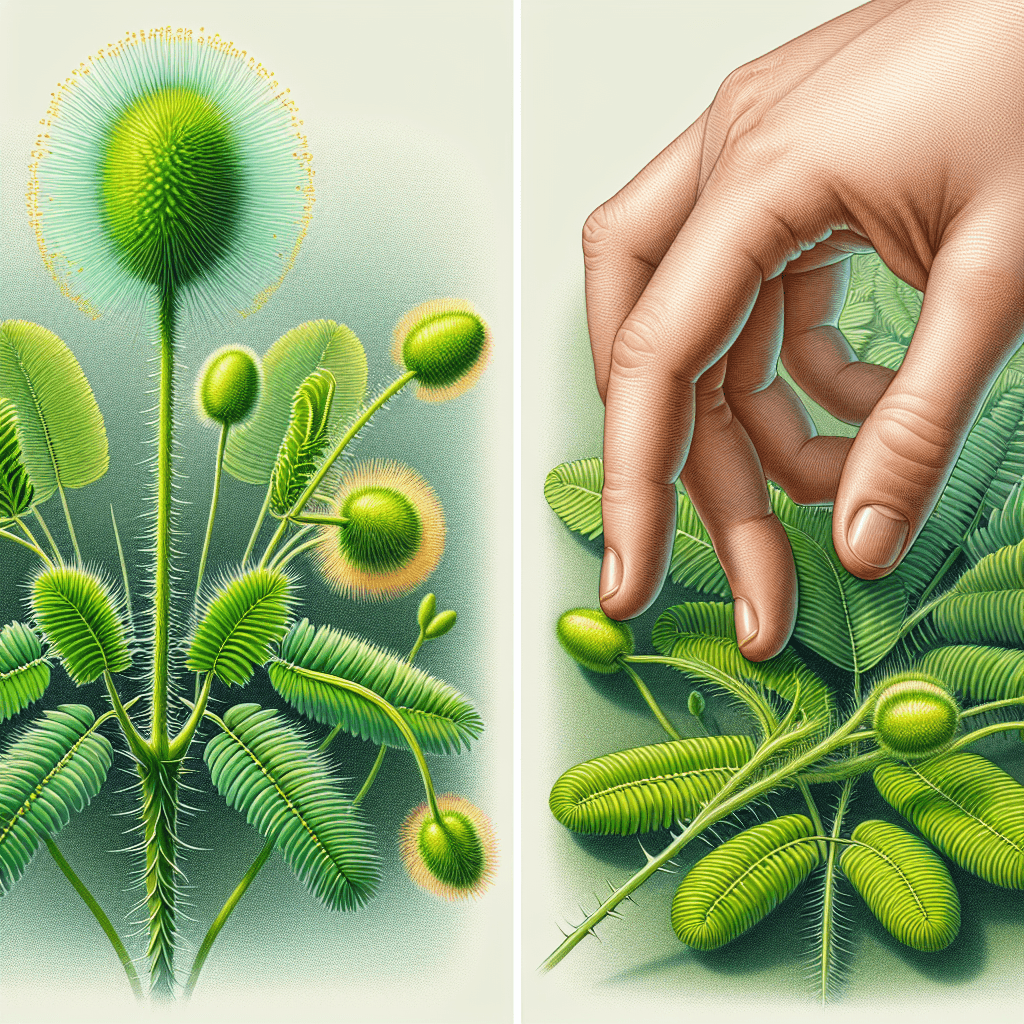Why do some plants instantly curl up when they are touched
It’s not a sign of shyness; it’s a brilliant, high-speed defense mechanism. Discover the astonishing electrical secret that allows these plants to snap shut in the blink of an eye.


Too Long; Didn't Read
TLDR: It's a defense mechanism. Touch triggers a rapid loss of water pressure in special leaf joints, causing them to instantly collapse and fold to startle and ward off herbivores.
Touch-Me-Nots and Shy Plants: The Science Behind Why Some Plants Instantly Curl Up When Touched
Have you ever gently poked the fern-like leaf of a "touch-me-not" plant and watched in wonder as it instantly folded its leaflets and drooped? This captivating display of nature isn't magic; it's a sophisticated survival mechanism. While most plant movements are too slow for us to perceive in real-time, a select few have mastered the art of rapid response. This fascinating behavior, a swift and deliberate reaction to a physical stimulus, offers a glimpse into the complex and active lives of plants. This post will explore the remarkable science behind why some plants instantly curl up when touched, delving into the cellular mechanics and the evolutionary advantages that drive this incredible adaptation.
The Mechanics of a Rapid Response
This swift folding action is a type of "nastic movement," meaning the direction of the response is independent of the direction of the stimulus. Specifically, it's known as thigmonasty (response to touch) or seismonasty (response to shaking or shock). Unlike the slow, growth-oriented movements of plants toward light (phototropism), thigmonasty is a rapid, reversible change in posture.
The secret behind this movement lies in specialized structures at the base of the leaves and leaflets called pulvini. You can think of a pulvinus as a flexible, joint-like organ packed with water-filled cells. Here's how the process unfolds in a fraction of a second:
- Stimulus: When a leaf is touched, shaken, or exposed to a sudden temperature change, a tiny electrical signal, similar to a nerve impulse in an animal, is generated.
- Signal Transmission: This electrical signal travels rapidly from the point of contact to the pulvini.
- Water Evacuation: Upon receiving the signal, motor cells on one side of the pulvinus are triggered to rapidly pump out potassium and chloride ions.
- Osmosis and Pressure Loss: Following the basic principles of osmosis, water rushes out of these cells to balance the ion concentration outside. This sudden exodus of water causes a dramatic loss of internal water pressure, known as turgor pressure.
- Collapse and Fold: With the cells on one side of the pulvinus now limp and deflated, the structure can no longer support the leaf, causing it to fold inward or droop.
The entire process is a brilliant feat of hydraulic engineering at a microscopic level. After a few minutes, the plant slowly pumps the ions back into the cells, water re-enters, turgor is restored, and the leaves return to their open position.
The Evolutionary Advantage: Why Bother Folding?
This energy-intensive process didn't evolve by accident. Plants that exhibit thigmonasty gain several significant survival advantages.
- Defense Against Herbivores: The primary reason is believed to be defense. A sudden movement can startle a foraging insect or grazing animal, encouraging it to move on to a less "active" meal. Furthermore, the folded leaves present a smaller, less appealing target, appearing wilted or less nutritious.
- Pest Deterrence: The quick motion can physically dislodge smaller insects that may be settling on the leaves to feed or lay eggs.
- Environmental Protection: Some researchers suggest that the folding can also help conserve water by reducing the surface area exposed to the sun during the hottest part of the day or protect the delicate leaves from damage during heavy rainfall.
Famous Examples in the Plant Kingdom
While this trait is relatively rare, a few famous plants are well-known for their sensitivity:
- Mimosa pudica: Commonly known as the "touch-me-not," "shy plant," or "sensitive plant," this is the most classic example. Its feathery leaves undergo a dramatic folding sequence that can cascade down the entire stem.
- Dionaea muscipula (Venus Flytrap): This carnivorous plant uses a similar rapid movement for a more aggressive purpose. When an insect touches the trigger hairs inside its jaw-like leaves, a rapid change in turgor pressure causes the trap to snap shut, imprisoning its prey.
- Biophytum sensitivum (Little Tree Plant): This small plant, which resembles a miniature palm tree, also folds its leaves downward when touched or disturbed.
Conclusion
The instant folding of a sensitive plant is far more than a simple party trick. It is a highly evolved, complex biological process that demonstrates the remarkable ways plants interact with their environment. Driven by a rapid hydraulic mechanism within the pulvini, this movement serves as a brilliant defense against predators and potential harm. It reminds us that the plant world is not passive but is filled with dynamic, responsive organisms employing sophisticated strategies for survival. The next time you encounter a touch-me-not, you'll see not just a curiosity, but a testament to the ingenuity of natural selection.


